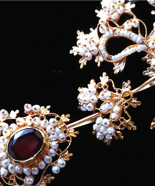Getting There, Out & About
Sardinia is a mere 2 hours flying time from London.
The Mediterranean’s second largest island after Sicily, it covers 9,300 square miles with 1,800 km of coastline, contoured by rugged cliffs, tiny coves, and picturesque villages. Inland it has lush and wild landscape of untouched beauty.
Cagliari, located on the south coast, is the island’s capital and main airport. Olbia, located on the northeast coast, is the gateway for the Costa Smeralda region.
















